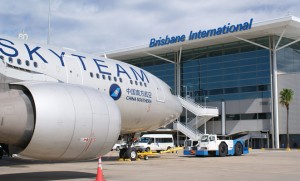
Labor’s candidate for the federal seat of Griffith in this Saturday’s by-election, Terri Butler, has called for a trial curfew for Brisbane Airport even though there has been no public call for one and Brisbane experiences few noise complaints, largely thanks to rigid night-time noise abatement tracking and runway use, writes AA columnist Doug Macdonald.
The curfew calls also pre-empt the findings of a review into the need for a curfew at the airport begun by the Department of Infrastructure – at the instigation of former Prime Minister and outgoing member for Griffith Kevin Rudd – late last year.
As the Australian Airports Association (AAA) noted in its submission to the Brisbane Airport curfew review: “It is clear that a curfew on this airport will put pressure on jobs and economic activity. One can cite the difficulty this will create in attracting new tourist services, or the risk to especially long-haul international flights to Brisbane and Queensland as cautions against proceeding with operational limitations.”
A Brisbane Airport curfew would require the rescheduling of 120 passenger flights weekly – 200 during summer when daylight savings time is in effect in southern states). It would further exacerbate delays for passengers hubbing through Brisbane on connecting flights, reduce the time business travellers can spend on same-day return visits to southern capital, and would have a significant impact on air freight, affecting not just communities in regional Queensland but in neighbouring PNG and Pacific Island nations.
Notes the AAA: “As a major international gateway airport, Brisbane Airport was planned and designed as a 24-hours operations port. The AAA understands that Deloittes Access Economics was commissioned to investigate the impact of a curfew and that a number of negative impacts were identified. These range from a decrease in tourism as certain routes would be dropped by airlines and an impact on jobs, reduced freight capacity leading to an increase in the cost of freight in and out of Australia as competition for services are reduced, as well as the secondary impacts in other capital city ports, and regional aerodromes.”
Alluded to by the AAA but otherwise largely forgotten in the curfew debate is that Brisbane is the freight lifeblood for millions of people stretching from Birdsville through Torres Straits, PNG, the Solomons, Nauru and Fiji. Much freight arrives at Brisbane from southern capitals on night freighters, well before 6am. This timing enables transhipment to domestic and international freighters, including turboprops and 737Fs, as well as early morning Qantas and Virgin RPT flights north which also carry express freight.
That means today people in any number of regional centres that fall within a line east of Charleville/Mt Isa/Cairns/lower Cape York can collect overnight consignments at the local freight agent on their way to work in the morning. In Cape York and some island nations outports people can expect their freight on the later regionals that connect with the morning (some pre 6am) jets ex Brisbane. Throughout the island area something urgently needed, ordered before close of business, can be sourced from Brisbane (or further south) to arrive the next afternoon.
But a Brisbane Airport curfew would in many cases add a full day to this highly valued and depended-on service.
One freight express operator tasks seven aircraft out of Brisbane from around 0200–0530 daily. After a four-five hour rest break at the end port they depart around 1700 for Brisbane. This crew hours pattern – developed to set up the bank charter runs of the 1980s – would be totally destroyed if their Brisbane departures were delayed to 0700+, also killing the 5pm return legs unless grossly unviable crewing was used.
Also overlooked is that Brisbane is a strategically situated alternate for Sydney and Melbourne from the US and Asia, particularly in foggy winter when many US-Sydney flights track near Brisbane to minimise jetstream headwinds – seeing internationals divert Brisbane from 0300-0500. A curfew would mean far costlier and less favourable diversions.
The impact of a curfew at Brisbane Airport would extend well beyond Brisbane.












